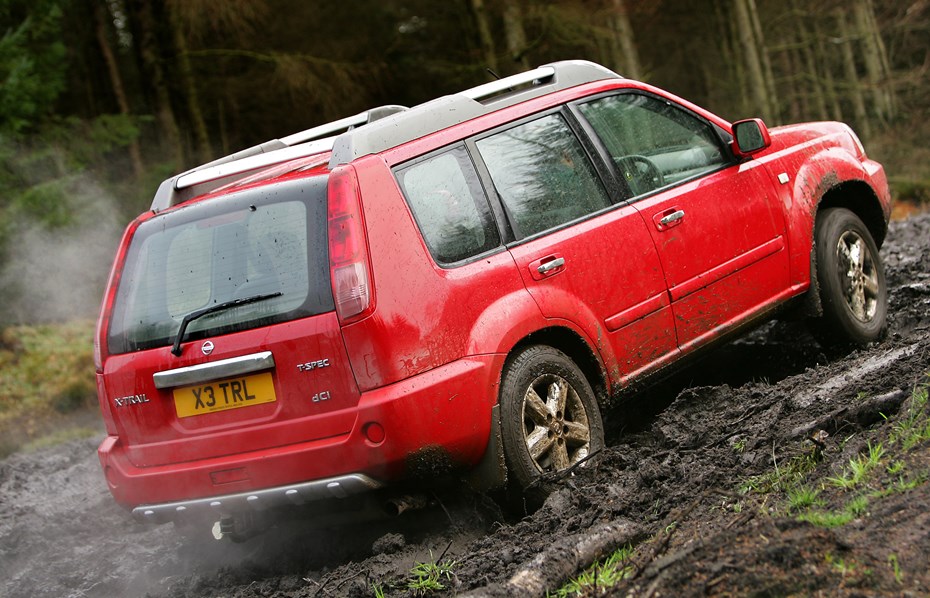Owners of large petrol 4x4s could find themselves stuck with their cars when they come to change it as dealers steer clear of thirsty off-roaders.
Parker’s has learned from trade insiders that there is currently no demand among used car buyers for large petrol-powered off-roaders, particularly those with big V8 engines, and dealers are far less likely to take them in part exchange.
Our source confirmed stories of number of individual customers unable to part exchange a large petrol 4x4 for their next car.
He said no matter how cheap the car, it is not worth dealers accepting these very thirsty 4x4s, which are in danger of sitting on the forecourt for months depreciating further.
And that even if a dealer offered ‘bottom book’ price for the car and sent it to auction, there would be no guarantee it would sell.
Causes
Increasing fuel prices and the prospect of owners being liable for double the amount of road tax on certain high fuel consumption models has meant used car buyers have been more wary before deciding on their next purchase.
Recent fuel price rises and changes to road tax rules could have made owners of big 4x4s keener to try to change their cars.
But there is no appetite at present for thirsty 4x4s that would typically cost £100 or more to fill up with petrol as fuel prices continue to soar, and become liable for more than £450 a year in vehicle excise duty by 2010 for models currently two years old.
Drivers hoping to part exchange these models could be forced to sell their cars privately before they can buy a replacement.
Tough times
Andrew Harrison-Smith, owner of Peterborough-based independent Land Rover specialist Nene Overland, said the whole 4x4 market was facing a difficult time, but warned that depreciation is currently very heavy on large petrol 4x4s.
However, he said owners and buyers could be hit less hard if they consider converting large petrol Land Rovers and Jeeps to run on LPG (liquefied petroleum gas).
‘Values for big petrol engined 4x4s are about £3000 or perhaps even £4000 lower than for the diesels,’ he told Parker’s.
‘If people chose a petrol 4x4 and spent £1500-£2000 on converting it to LPG they would be able to run it more cheaply. If it’s a clean car it should sell for the same or slightly higher than the trade guides suggest for the standard petrol model.’
The association representing franchised dealers confirmed large off roaders presented sales staff with a big challenge, but claimed there wasn’t a blanket policy to refuse petrol 4x4s as part exchanges.
Sue Robinson, director of the National Franchised Dealer Association, told Parker’s: ‘The market for 4x4s has become tougher following the Government’s announcement in the budget of revised VED rates for higher polluting cars.
‘This has had an impact on values of these vehicles, which has meant that all dealers have had to review their stocking policies to make sure they are holding the right stock of vehicles to sell.
‘This may mean from time to time that they are less inclined to take certain vehicles in certain circumstances.
‘This is not a new practice, it is something that has ocurred for many years as dealers endeavour to hold their optimum stock profile.’
Advice
Private sale
If you sell your car privately, it will be worth ensuring it has had a recent service and has a long MoT where applicable to ensure potential buyers feel reassured.
If there are any small dents in the bodywork or chips in the paint you could maximise the car’s value by employing the services of a technician from a ‘smart’ repair company (smart in this case stands for small to medium area repair technique). Spending a couple of hundred pounds could make that much again in selling a car that looks pristine.
Spend money on a valet before the car is viewed and choose the conditions and location carefully if you are photographing the car for an advert – bright, sunny days are best, as long as you have the sun behind you. Park the car at an angle for the main picture showing the front three-quarters.
LPG conversion
Many petrol 4x4 owners choose to have the car converted to run on both LPG (liquefied petroleum gas) and petrol. LPG is about half the price of unleaded petrol and is available from about 1300 filling stations in the UK.
If you’re a high mileage driver, it won’t take long to recoup the cost of the conversion, which is typically about £2000.
However, it isn’t a simple matter of adding a tank and a fuel line: certain engine components must be changed, so find a LP Gas Association approved converter to carry out the work (see here).
The benefit of having an LPG tank in addition to the petrol tank means there is always petrol to fall back on if the LPG runs out before you find a garage.
If you plan to cross the channel, Euro-tunnel does not allow LPG converted vehicles to cross, so you would have to use a ferry.
Just so you know, we may receive a commission or other compensation from the links on this website - read why you should trust us.




